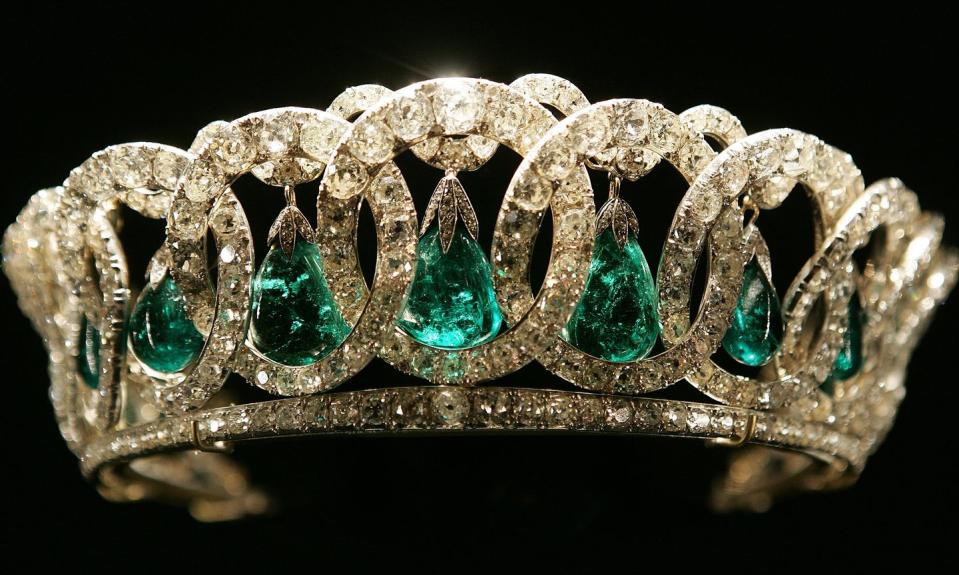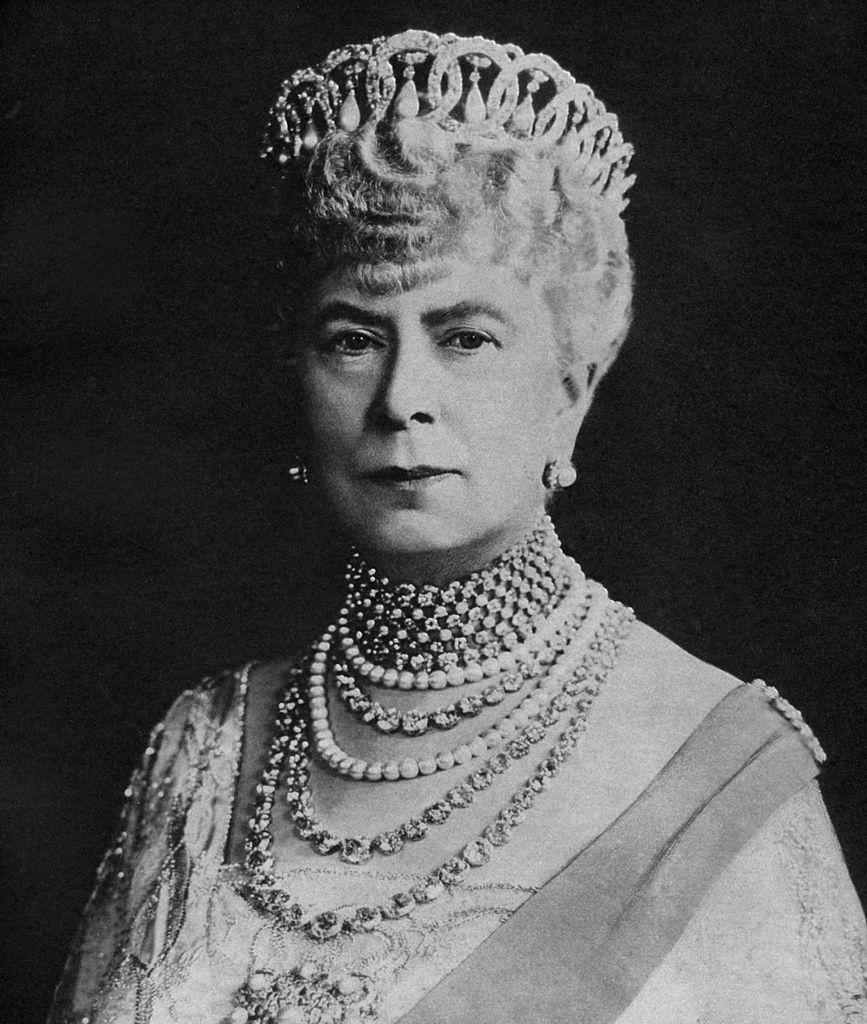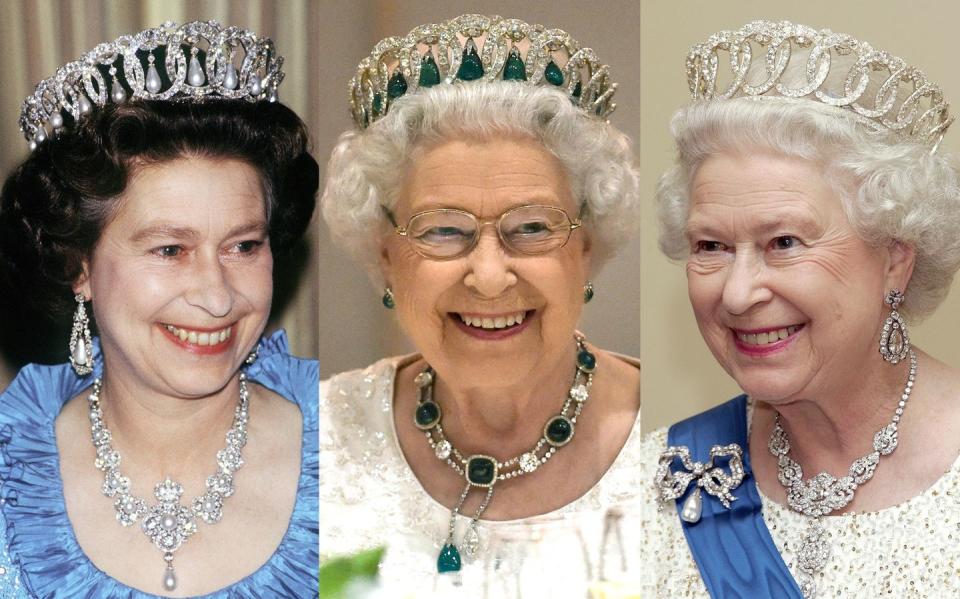Queen Elizabeth's Favorite Tiara Started as a Smuggled Romanov Jewel
Just weeks ago at Christie's Geneva, an emerald that belonged to Catherine the Great sold for over $4 million. Experts attribute the success of the sale in part to the size of the stone—75 carats—but even more so to its Russian provenance. “It is extremely rare for us to get jewels this significant from the Romanov treasures,” Daphne Lingon, head of jewelry at Christie's America explained.
Tracking how this emerald made it out of Russia intact brought me down the Romanov jewelry rabbit hole. And it’s a deep one. It soon led to the tale of one Duchess Vladimir —the last Romanov owner of the necklace—who managed to get her jewelry out of Russia after the Revolution. Eventually, she got herself out as well.
Which brings me to the Vladimir Tiara, a favorite of Queen Elizabeth’s, and a piece that was the subject of some speculation around the royal wedding last year. The diamond and pearl tiara was commissioned by the Duchess Vladimir from the Romanov court jeweler Bolin. The Duchess, born Marie of Mecklenburg-Schwerin, joined the Romanov dynasty in 1874 when she married Grand Duke Vladimir Alexandrovich of Russia, uncle to the doomed last Romanov Emperor, Nicholas II. She established a grand court at St. Petersburg’s Vladimir Palace, with a jewelry collection to match.

How did she manage to get those treasures out of Russia after the revolution, when so many other priceless pieces belonging to the Romanovs have disappeared? The fate of the Romanov treasures remains one of jewelry’s great mysteries, but the Vladimir Tiara’s fate is one of the few we can trace. And its journey is straight out of James Bond.
Grand Duchess Vladimir was no wallflower; in fact she was known as the grandest of the grand duchesses, had a renowned collection of jewels, and parties. Upon receiving news of the revolution, she left St. Petersburg with only a few "daytime jewels and strings of pearls" and hid the real treasures in a secret compartment in the Vladimir Palace. She remained in the countryside until February 1920, when she fled to Venice, becoming the last Romanov to leave Russian soil.

Her jewels, however, had gotten out even before she did. In an operation worthy of a thriller, a British officer snuck into the Vladimir Palace dressed as a worker (though one version states it was as an old woman) and stashed all the hidden jewels in his bags (in the old-woman version, some were sewn into a bonnet). The jewels made it safely out of Russia and into London where her son Grand Duke Boris was living in exile.
After Duchess Vladimir’s death, her family began to auction her jewels to support themselves. The Vladimir tiara had been damaged a bit during its voyage, and so when it was sold to England's Queen Mary (Queen Elizabeth's grandmother), the royal seized the opportunity to make the tiara a bit more versatile. (Always practical, those Windsors.)

Fifteen emeralds that once belonged to Mary's mother Mary Adelaide (the original Duchess of Cambridge) were added, along with a mechanism that allowed them to be interchangeable with the original pearls. It remains one of Queen Elizabeth's favorites (she likes it with the pearl drops for a visit to the Vatican), or the alternate emerald drops (for a visit with the President of Ireland), or sometimes with no drops at all. Options!
You Might Also Like

